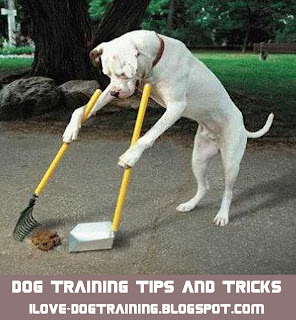There are many dogs who need training because they specialize in either taking care of humans with disabilities or assisting with law enforcement activities. However, dog training is also used as a popular method of training house pets to communicate with their owners, other dogs and members of the household. Dog training involves lessons on how to behave in certain situations; it also teaches the animal to respond to specific commands and actions.
Dog training is rooted in communication as the handler is communicating to the dog behaviors that are desirable or undesirable in specific situations - this is, of course, from the human perspective. The dog can in turn signal that he is unsure, nervous, happy, sick or excited: the dog's emotional state plays a great part in whether he adheres to the training because if the animal is exhausted or distracted he will not learn the method properly.
Operant conditioning involves using consequences to modify different forms of behaviour: the main tools of operant conditioning are negative and positive reinforcement. Training usually involves a system of punishments and rewards and operant conditioning further explains these four types of consequences: negative reinforcement, positive reinforcement, negative punishment and positive punishment.
Positive reinforcement occurs when a behavior is followed by an action that is seen as pleasant and increases the frequency of the good behavior. The pleasant action in dog training consists of using praise and positive actions to reward the dog instead of punishment or correctional actions. This can be done with treats, toys, or verbal praise. The main tip here is to to determine what motivates the animal and use the motivator as a reward system.
In positive reinforcement training it is crucial to reward the dog immediately. The method works by prompting the dog to perform certain simple actions such as sit, stand, stay or others. If you cue the dog to sit and he responds promptly give him the treat so he knows he is being rewarded for this behavior: make sure to choose something that the dog gets pleasure from.
The two key issues in positive reinforcement are timing and consistency. so ensure that the dog is rewarded immediately each time he obeys the cue and always use the same cue words.
Negative reinforcement works in the opposite way, this method utilizes forms of punishment each time the animal displays undesirable or unwanted behaviour. This option sees the use of tools such as choke collars or chemical compounds such as bitter apple and lemon juice. Recently the crate training method has also been classified as negative reinforcement - this method encloses the animal in a small crate when the owner is unavailable so the dog learns to control his urges for going to the bathroom in the crate, as dogs do not like to go to the bathroom in the same place. Other people might swat the animal on the buttocks or nose as means of negative reinforcement, this issue is very controversial and in some cases can move from negative reinforcement to abuse. There is a very thin line and physical punishment is rarely necessary and does not foster a good relationship between owner and dog. Owners must be very careful indeed if choosing this method.

